Science with U V I T
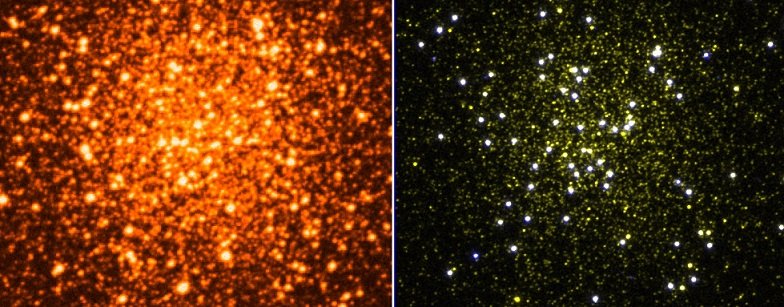
Optical and UVIT view of the globular cluster NGC 288 [read more]
Primary strengths
- Arc-second resolution over a wide (30') field of view
- Time resolution as short as 600 Hz
- A wide range of filters, along with gratings
- Simultaneous observations alongside X-ray timing and imaging telescopes onboard Astrosat
Science Highlights
Multi-wavelength Image of Stephan's Quintet
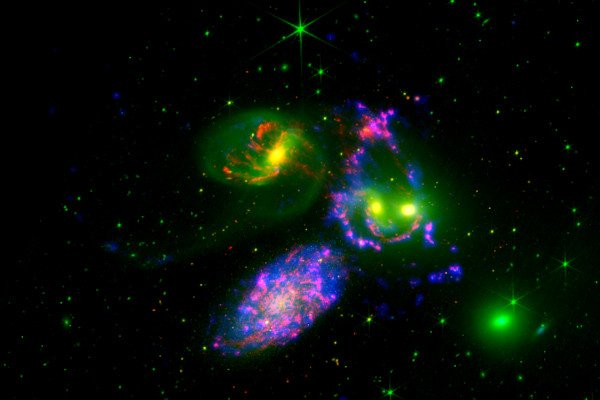
Stephan's Quintet is a visual grouping of five galaxies in the sky. Four of these are interacting with each other, leading to enhanced star formation, disturbances to gas content, and morphological changes in this group of galaxies. The figure shown combines Infra-red images from JWST (seen in red and green bands) and UV images from UVIT (see in the blue band). Ultraviolet emission comes from young star-forming regions and very hot gas. Infrared emission comes from different types of dust particles.
Credit: Joseph, Prajwel, Koshy George, Smitha Subramanian, Chayan Mondal, and Annapurni Subramaniam. "Smallest Scale Clumpy Star Formation in Stephan's Quintet Revealed from UV and IR Imaging." Research Notes of the AAS 6, no. 9 (2022): 180.
Interacting galaxy system NGC 5291
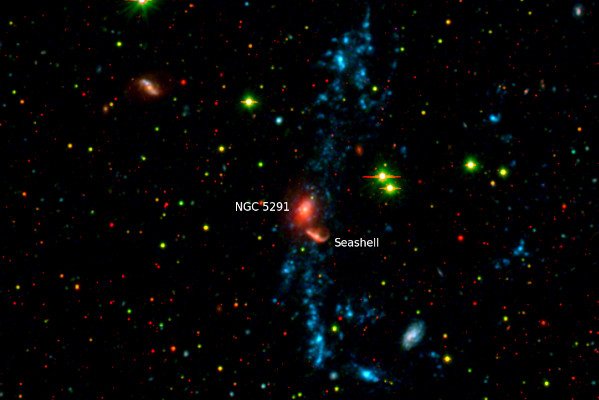
NGC 5291 is an interacting galaxy system that lies in the western outskirts of the cluster Abell 3574. It lies approximately 200 million light years away from our galaxy. NGC 5291 consists of an early-type galaxy, NGC 5291, and a companion galaxy known as "the Seashell" that is interacting with it. Several star-forming complexes and tidal dwarf galaxies can be seen as part of the system. The figure shows a colour composite image of the NGC 5291 system made using UVIT FUV (blue), UVIT NUV (green), and DECaLS z (red) band images.
Credit: Rakhi, R., Geethika Santhosh, Prajwel Joseph, Koshy George, Smitha Subramanian, Indulekha Kavila, J. Postma et al. "UVIT view of NGC 5291: Ongoing star formation in tidal dwarf galaxies at∼ 0.35 kpc resolution." Monthly Notices of the Royal Astronomical Society 522, no. 1 (2023): 1196-1207.
UVIT view of Andromeda galaxy
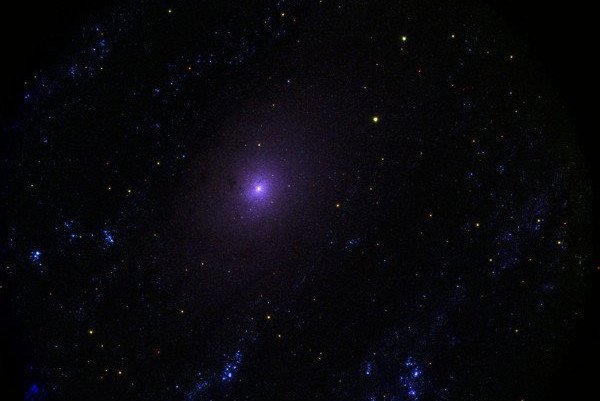
The great Andromeda nebula, also know as M31 from the Messier catalogue, is the closest galaxy that is large and similar to the galaxy we live in - the Milky Way. M31 is faint but large - it covers more sky than the moon. Ultraviolet imaging reveal the hottest, most massive, and youngest stars, whereas visible light images are dominated by the older, redder stars. With its wide field of view (the size of the moon), UVIT can map large objects such as M31 in a few pointings. No other space telescope can do this.
The UVIT images allow us to make accurate measurements of thousands of stars. These studies enable scientists to estimate how old the stars are, and to understand the processes of stars forming and dying. UVIT data also reveal the nature and composition of the interstellar dust in M31, and its different history compared with the Milky Way.
Globular Cluster NGC 362 imaged with UVIT
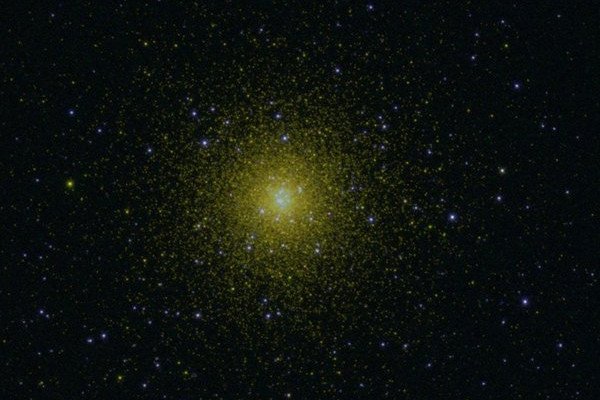
NGC 362 is a globular cluster in the northern edge of our satellite galaxy known as the Small Magellanic Cloud (SMC). The tightly packed stars which appear as white spot in the image form the core of the cluster. The light blue dots surrounding the cluster core are extreme horizontal branch stars. These stars undergo helium fusion in their cores and have very thin hydrogen envelope. The bright blue dots scattered all over the image are hot, young stars in the SMC. This is a false color composite image, where the light detected by the Far UV and Near UV channels of the UVIT are colored in blue and yellow respectively.